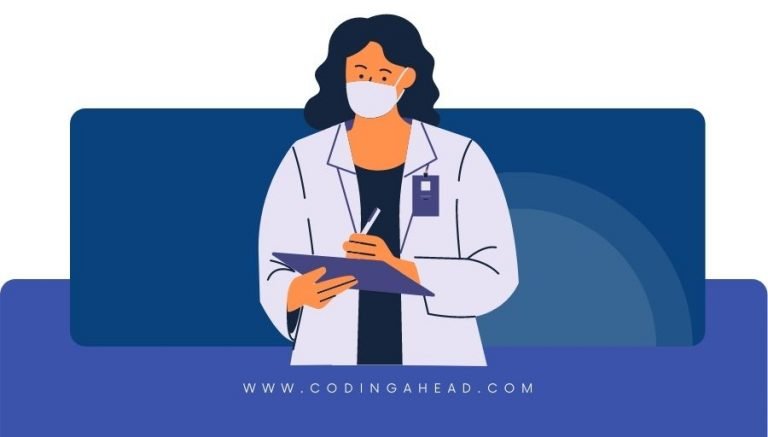How To Use CPT Code 31505
CPT 31505 describes the diagnostic procedure of indirect laryngoscopy using a laryngeal mirror to examine the larynx and detect any abnormalities. This article will cover the description, procedure, qualifying circumstances, appropriate usage, documentation requirements, billing guidelines, historical information and billing examples.
1. What is CPT Code 31505?
CPT 31505 can be used to describe the diagnostic procedure of indirect laryngoscopy. During this procedure, a healthcare provider uses a laryngeal mirror to examine the larynx and visualize the vocal folds. The purpose of this procedure is to detect any abnormalities or conditions affecting the larynx.
2. Official Description
The official description of CPT code 31505 is: ‘Laryngoscopy, indirect; diagnostic (separate procedure).’ This code represents a diagnostic procedure where a provider uses a laryngeal mirror to visualize the laryngeal and hypopharyngeal structures, including the vocal folds.
3. Procedure
- After appropriate preparation and anesthesia, the healthcare provider inserts a small, long-handled mirror into the patient’s throat.
- A light source is used to illuminate the mouth, allowing the provider to view the laryngeal and hypopharyngeal structures.
- The provider manipulates the mirrors to achieve proper reflection and visualization of the larynx.
- The provider examines the larynx and vocal folds for any abnormalities or conditions.
- The procedure is completed once the provider has obtained a clear view of the laryngeal structures and completed the necessary examination.
4. Qualifying circumstances
CPT 31505 is typically performed when there is a need to evaluate the larynx for diagnostic purposes. It may be used to assess conditions such as vocal cord dysfunction, laryngeal polyps, laryngitis, or other abnormalities affecting the larynx. The procedure is performed by a qualified healthcare provider who has the necessary training and expertise in performing indirect laryngoscopy.
5. When to use CPT code 31505
CPT code 31505 should be used when a healthcare provider performs a separate diagnostic procedure of indirect laryngoscopy. It should not be reported if the indirect laryngoscopy is performed as part of another service or procedure. For example, if the provider performs indirect laryngoscopy and also performs a biopsy, the appropriate code to report would be 31510, which includes both the indirect laryngoscopy and the biopsy.
6. Documentation requirements
To support a claim for CPT 31505, the healthcare provider must document the following information:
- Reason for performing the indirect laryngoscopy
- Details of the procedure, including the use of a laryngeal mirror and any additional equipment or techniques
- Findings from the examination, including any abnormalities or conditions detected
- Any additional actions taken during the procedure, such as biopsies or removal of foreign bodies (if applicable)
- Signature of the healthcare provider performing the procedure
7. Billing guidelines
When billing for CPT 31505, ensure that the procedure is performed as a separate diagnostic procedure and not as part of another service or procedure. It is important to use the appropriate code based on the specific circumstances of the procedure. For example, if the indirect laryngoscopy includes a biopsy, the appropriate code to report would be 31510. It is also important to review any additional guidelines or requirements from the payer to ensure accurate billing and reimbursement.
8. Historical information
CPT 31505 was added to the Current Procedural Terminology system on January 1, 1990. There have been no updates or changes to the code since its addition.
9. Examples
- A healthcare provider performs an indirect laryngoscopy to evaluate a patient with persistent hoarseness.
- During a diagnostic evaluation, a provider uses indirect laryngoscopy to assess a patient with suspected vocal cord nodules.
- A patient presents with difficulty swallowing, and an indirect laryngoscopy is performed to examine the larynx for any structural abnormalities.
- A healthcare provider performs an indirect laryngoscopy to evaluate a patient with chronic cough.
- During a diagnostic workup, a provider uses indirect laryngoscopy to assess a patient with suspected laryngeal papillomatosis.
- A patient with voice changes undergoes an indirect laryngoscopy to evaluate the vocal folds.
- A healthcare provider performs an indirect laryngoscopy to assess a patient with suspected vocal cord paralysis.
- During a diagnostic examination, a provider uses indirect laryngoscopy to evaluate a patient with suspected laryngeal cancer.
- A patient with recurrent throat infections undergoes an indirect laryngoscopy to assess the condition of the larynx.
- A healthcare provider performs an indirect laryngoscopy to evaluate a patient with suspected laryngopharyngeal reflux.


